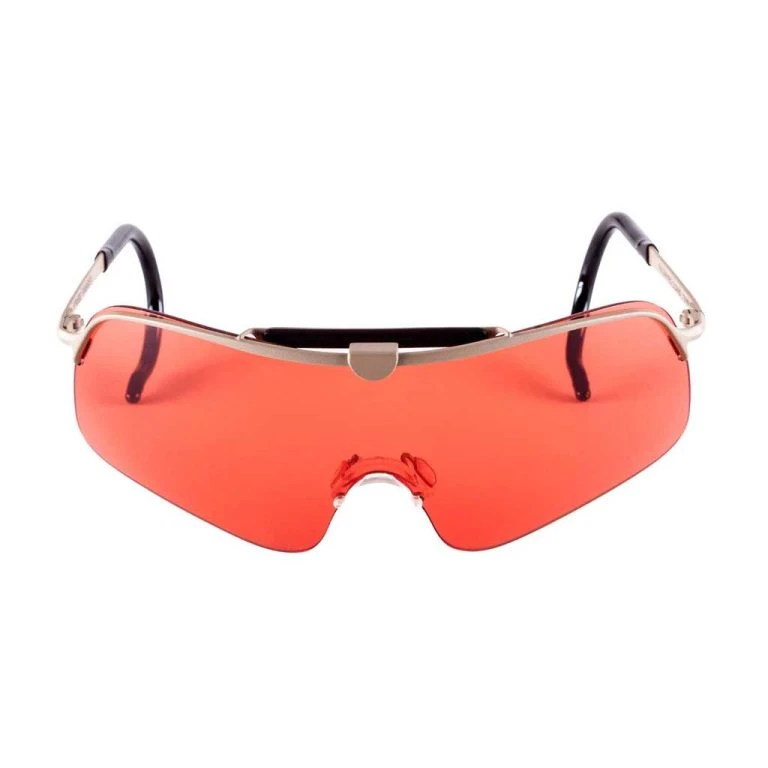Shooting is a demanding sport that requires keen eyesight and the ability to adapt to various weather conditions. The right pair of shooting sunglasses can make a significant difference in a shooter\'s performance by providing clear vision and protecting the eyes from environmental elements. Here\'s a guide to choosing the best shooting sunglasses for different weather conditions.
1. Bright, Sunny Conditions

Polarized Lenses
Polarized lenses are ideal for bright, sunny days. They reduce glare from reflective surfaces such as water, sand, and concrete, which can be distracting and impair vision.
Dark Tint Lenses
Lenses with a dark tint, such as gray or green, help reduce overall brightness and provide a natural color balance. They are excellent for maintaining visual accuracy in bright light.
UV Protection
Ensure the lenses offer 100% UV protection to shield your eyes from harmful UVA, UVB, and UVC rays, which can cause long-term damage to your eyes.
2. Overcast or Cloudy Conditions
Yellow or Amber Lenses
Yellow or amber lenses are perfect for low-light conditions often experienced on overcast or cloudy days. These lenses enhance contrast and depth perception, making it easier to spot targets.
Light Tint Lenses
Lenses with a light tint allow more light to enter the eyes, improving visibility without causing eye strain. These are suitable for maintaining clarity when the light is diffused.
3. Dawn or Dusk Shooting
Photochromic Lenses
Photochromic lenses automatically adjust their tint based on the ambient light conditions. They darken in bright light and lighten in low-light conditions, providing optimal visibility from dawn to dusk.
Orange or Rose Lenses
Orange or rose-tinted lenses improve contrast and enhance the visibility of targets against various backgrounds. These tints are especially useful during the low-light conditions of dawn and dusk.
4. Rainy or Foggy Conditions
Anti-Fog Coatings
Lenses with anti-fog coatings are essential for maintaining clear vision in rainy or foggy conditions. These coatings prevent moisture from condensing on the lenses, ensuring uninterrupted sight.
Hydrophobic Coatings
Hydrophobic coatings repel water, keeping rain and moisture from sticking to the lenses. This feature helps maintain clarity and prevents water droplets from obstructing your view.
Clear Lenses
Clear lenses are suitable for extremely low-light conditions and when you need protection without any tint. They are ideal for indoor shooting ranges or heavily overcast and rainy days.
5. Windy or Dusty Conditions
Wraparound Design
Sunglasses with a wraparound design offer better protection against wind and dust by covering a larger area around the eyes. This design helps prevent particles from entering your eyes and causing irritation.
Vented Frames
Vented frames enhance airflow around the lenses, reducing the chances of fogging and keeping your vision clear in windy conditions.
Polycarbonate Lenses
Polycarbonate lenses are impact-resistant and provide excellent protection against flying debris. They are lightweight and durable, making them ideal for harsh environmental conditions.
Conclusion
Choosing the right shooting sunglasses for different weather conditions is crucial for maintaining optimal vision and eye protection. Whether you\'re shooting in bright sunlight, overcast skies, or foggy weather, there\'s a specific lens tint and feature set that will enhance your performance and safety.
Shooting Sunglasses are available at Aviator Sunglasses. Explore our range to find the perfect pair that suits your shooting needs and weather conditions.


